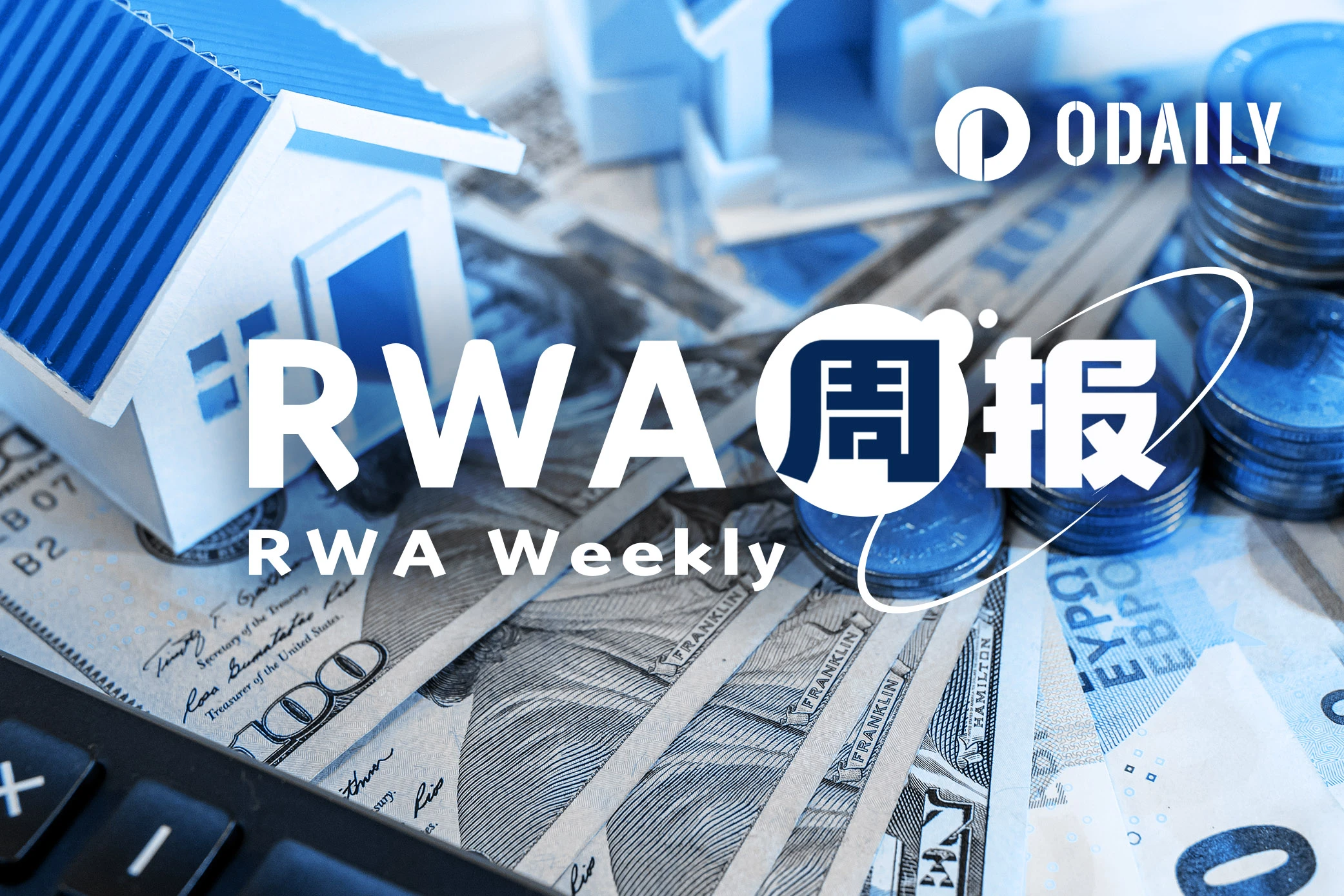Original | Odaily Planet Daily ( @OdailyChina )
Author | Ethan ( @ethanzhang_web3 )

RWA Sector Market Performance
According to RWA.xyz data, as of April 29, 2025, the total value of RWA on the chain reached 21.61 billion US dollars, an increase of 8.61% from 30 days ago. The total number of on-chain asset holders is 98,439, an increase of 6.65% from 30 days ago, and the number of asset issuances is 189. The total value of stablecoins is 231.42 billion US dollars, an increase of 2.78% from 30 days ago, and the number of stablecoin holders is 159.66 million, an increase of 2.78% from 30 days ago.
From the historical trend, the total value of RWA chain has shown significant growth since 2019, especially after 2023, and reached a peak in early 2025 , showing the rapid popularization of tokenized assets. In the distribution of asset categories, private credit dominates, with a value of US$12.9 billion, accounting for 59.69% of the total value; US Treasury Debt is worth US$6.2 billion, accounting for 28.69%, an increase from 27% last week ; Commodities is US$1.5 billion, accounting for 6.94%; International Alternative Funds is US$450.4 million, accounting for 2.08%. Stocks, non-US Government Debt and Corporate Bonds account for relatively small proportions.
Compared with last weeks data , U.S. Treasury bonds and private credit are still the core engines, contributing a total of $620 million (94%) of the $660 million increase in week-on-week growth. The RWA sector still maintains structural growth, dominated by compliant assets (treasury bonds, credit), and institutional alternative funds, commodities and equity are still in the early stages. At the same time, the siphon effect of stablecoins cannot be ignored. The scale of on-chain stablecoins increased by $4.33 billion week-on-week, far exceeding the increase in RWA non-stablecoin assets (620 million), reflecting that the market prefers low-risk liquidity tools in the short term.

Review of key events last week
Circle to launch cross-border payments network to challenge Visa and Mastercard
Stablecoin giant Circle will release a new payment and cross-border remittance product at its headquarters at the World Trade Center in New York on Tuesday. The product is called Circle’s “next move” and targets users including banks, payment institutions, fintech companies and USDC partners.
Circle is the issuer of USDC, which currently has a market value of about $60 billion. The new network initially focused on cross-border remittances and may challenge traditional giants Visa and MasterCard in the future. According to people familiar with the matter, Circle is working hard to return to its payment roots to expand the application of stablecoins in the global payment field.
As stablecoin regulation becomes clearer, Circle also plans to go public in the United States, but has postponed its IPO due to market volatility. The industry believes that as stablecoins such as USDC and USDT are widely used for cross-border transfers, Circles move may accelerate the process of stablecoins replacing traditional payment systems.
Lynq real-time revenue settlement network to go live in Q2 2025
According to the official announcement, Arca Labs, Tassat Group and tZERO Group jointly launched Lynq, a real-time revenue settlement network, which is scheduled to go live in the second quarter of 2025. Lynq is supported by the tokenized Arca Institutional US Treasury Fund (TFND), using the Avalanche blockchain to issue shares, and US Bank to provide custody services. Partners such as B2C 2, Galaxy Digital and Wintermute will help with initial liquidity and user introduction, aiming to solve market fragmentation and risk issues in digital asset settlement.
Wall Street giant DTCC launches Collateral AppChain to promote real-time tokenized asset settlement
DTCC announced the launch of the Collateral AppChain platform, which aims to achieve real-time collateral management of tokenized assets and innovate the T+X settlement process of traditional finance. The platform is based on Hyperledger Besu and supports global real-time trading of stocks, bonds and crypto assets, eliminating liquidity restrictions. DTCC clears $9 to $11 trillion per day. This move shows that it embraces blockchain technology to meet market challenges and plans to create an efficient and low-cost settlement system.
The Federal Reserve has announced the withdrawal of regulatory guidance on banks’ crypto assets and dollar token businesses, and simultaneously updated relevant business expectation standards. Analysts believe that this move by the Federal Reserve marks that Bitcoin has gained wider legalization in the eyes of regulators, going beyond simple banking policies, and will help the Federal Reserve accelerate the realization of its vision of a financial environment where Bitcoin is as accessible and secure as traditional legal currencies. This may mean that Bitcoin checking accounts, cryptocurrency-backed loans, and cryptocurrency-legal currency conversions will be incorporated into traditional banking operations faster than expected.
Jeff Weinstein, product director of US payment giant Stripe, posted on the X platform that Stripe is building its first financial product centered on stablecoins, which is ready for testing.
Earlier news said that Stripe completed the acquisition of Bridge for US$1.1 billion and was preparing to vigorously promote stablecoins.
The U.S. Securities and Exchange Commission issued a memorandum stating that Ondo Finance and representatives of Davis Polk Wardwell LLP met with the U.S. Securities and Exchange Commission (SEC) Crypto Working Group to discuss the compliance path for issuing and selling tokenized U.S. securities. The meeting topics included key issues such as structural models for tokenized securities, registration and broker requirements, market structure regulations, financial crime compliance, and state corporate laws. Ondo Finance proposed seeking a regulatory sandbox or other form of regulatory exemption to advance the issuance of its tokenized asset products. The talks are intended to provide a clear regulatory framework for tokenized securities in the U.S. market.
BlackRock and six other entities account for 88% of tokenized Treasury issuance
RWA.xyz data shows that six entities hold 88% of tokenized U.S. Treasuries. The largest issuer of tokenized wealth remains BlackRock. The companys tokenized U.S. Treasury fund, BUIDL, has a market cap of $2.5 billion, 360% higher than its closest competitor. The top six funds also include Franklin Templetons BENJI, with a market cap of $707 million; Superstates USTB, with a market cap of $661 million; Ondos USDY, with a market cap of $586 million; Circles USYC, with a market cap of $487 million; and Ondos OUSG fund, with a market cap of $424 million. Together, these six funds account for 88% of all tokenized Treasury issuance.
Hot Projects Latest News
R2 Yield ( R2 )
Official website: https://www.r2.money/
Introduction: R2 Yield is a stablecoin yield protocol that integrates physical assets (RWA), traditional finance (TradFi) and decentralized finance (DeFi), aiming to provide users with stable income opportunities through blockchain technology. Its core product, R2 USD, is a stablecoin backed by physical assets, including on-chain tokenized U.S. Treasuries, money market strategies, and real estate rental income. This design allows R2 USD to have both stability and yield-generating capabilities, breaking the limitation of traditional stablecoins (such as USDT and USDC) that do not directly generate income for users.
Latest developments: On April 25, it was announced that it had reached a cooperation with Arbitrum to complete the deployment of the Arbitrum testnet on the Ethereum Layer 2 network. Currently, users can receive test tokens through the official Discord, experience R2 USD minting, staking, and liquidity operations on the Arbitrum Sepolia testnet, and obtain points rewards by participating in task activities.
Since the testnet was launched , R2 has completed deployment on multiple test networks including Plume, ETH Sepolia, Arbitrum Sepolia, etc., attracting more than 90,000 users to participate in just one week.
Usual (USUAL)
Official website: https://usual.money/
Introduction: Usual is a decentralized stablecoin protocol that aims to create a fair, community-driven financial ecosystem through tokenized real assets (RWA). Its core goal is to transform the centralized profit model of traditional stablecoins (such as USDT) into a user-owned and governed model, redistributing value and control to the community through its stablecoin products USD0 and USD0++ , as well as the governance token USUAL. The project combines the stability of physical assets with the composability of DeFi, and is committed to providing users with secure, transparent and high-yield financial tools.
Recent developments: On April 25, Usual completed the second wave of early redemption fee redemption, distributing 8.4 million USUALx tokens to eligible USUAL holders. More distribution plans will be given in the future to encourage users to participate in staking for long-term returns. Previously, the Usual community passed the UIP-7 proposal , approving the redistribution method of previously collected early redemption fees.
Plume Network
Official website: https://plumenetwork.xyz/
Introduction: Plume Network is a modular Layer 1 blockchain platform focused on the tokenization of real-world assets (RWA). It aims to transform traditional assets (such as real estate, art, equity, etc.) into digital assets through blockchain technology, lowering the investment threshold and improving asset liquidity. Plume provides a customizable framework that supports developers to build RWA-related decentralized applications (dApps) and integrate DeFi and traditional finance through its ecosystem. Plume Network emphasizes compliance and security, and is committed to providing solutions that bridge traditional finance and the crypto economy for institutional and retail investors.
Latest developments: On April 25, Plume released a Q1 summary report detailing its progress in the first quarter of 2025; on April 28, Plume Network held its first RWA Ecosystem Day in Dubai.
Related articles
TVL exceeds 60 million US dollars, analyzing the wealth opportunities hidden behind Midas
The author breaks down in detail Midas, an innovative project that combines DeFi and RWA, and provides users with a guide to participate.
《 In-depth layout guide: 10 RWA projects worth paying attention to in 2025 》
The article summarizes 10 real-world asset (RWA) projects worth paying attention to this year, and deeply analyzes several core issues in the RWA track.
《 Comprehensive review of the 4 most popular RWA protocols: Ondo, OpenEden, Plume and Ethena》
Written by Ash and compiled by TechFlow, it introduces 4 popular protocols in the RWA (real asset tokenization) field, emphasizes its potential in introducing traditional financial assets, and compares and analyzes the characteristics, challenges and market strategies of each protocol.










